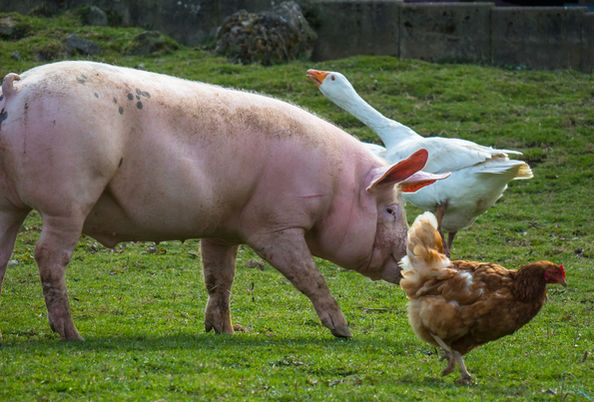Regenerative agriculture

Regenerative agriculture is often used as a synonym for holistic, natural and sustainable food production.
At the heart of regenerative agriculture is the focus on an intelligent use of solar energy, photosynthesis and soil biology. By restoring symbiotic interactions between plants and soil micro-organisms, the farmer increases the fertility of his soil. Slowly by slowly he eliminates the need for synthetic feritlisers and chemicals – most often without any decrease in yields or earnings. Regenerative agriculture systematically nurtures soil life, heals ecosystems and restores nutrient and water cycles.
Diversity in and above ground
Biodiversity is the basis of life, the condition of our well-being and the key to sustainable food production. This is especially true for soil biology. For their survival and thriving specialized soil micro-organisms rely on constant interaction and exchange with their fellow creatures. In order to transform a (partially) degenerated soil into a habitat for a wide variety of micro-organisms, it is essential to restore the physical and chemical framework of the soil.
Farming methods that preserve the soil and promote permanent and intensive root growth from a wide variety of plants will eventually restore soil biodiversity. Rich biodiversity above ground is achieved through mixed cropping, intercropping, under-sowing as well as the cultivation of biodiverse green manures.
Soil life and plant act as a single interdependent organism. Whether wheat, barley, corn or potatoes: micro-organisms and crop live in symbiosis. The plants provide the soil biology with solar energy in the form of sugars while the micro-organisms offer the plants nutrients from the soil and their metabolic by-products.
As the soil is revitalized, the humus content, and thus fertility of the soil, increases. As soon as the humus content exceeds a threshold of about 5 %, a dynamic balance or capacity of self-regulation is established. With the help of the plant root exudates, soil organisms permanently regulate and optimise the chemical composition of the soil. That is why the regenerative farmer will concentrate on supporting this symbiosis. His reward will be a rich harvest - the surplus of the "soil-plant-organism".
The 5 principles of regenerative agriculture
The following principles apply:
1. High biodiversity in and above the ground
2. Least disturbance of the soil (minimum tillage)
3. Living roots
4. Soil armour (the soil is constantly covered)
5. Animal integration
Regenerative agriculture is an opportunity
Regenerative agriculture increases carbon stock in the soil. A vital soil, rich in biodiversity and with high carbon content is a fertile soil. Fertile soil is the basis for productive and profitable agriculture and is crucial for global food security.
Please scroll down and learn about our mission!

Nature can nourish the whole of humanity - if we let her!
Our mission
We transfer know-how and connect the players in the field of regenerative agriculture.
We inspire and empower producers and consumers to take action to regenerate our soils and ecosystems.






